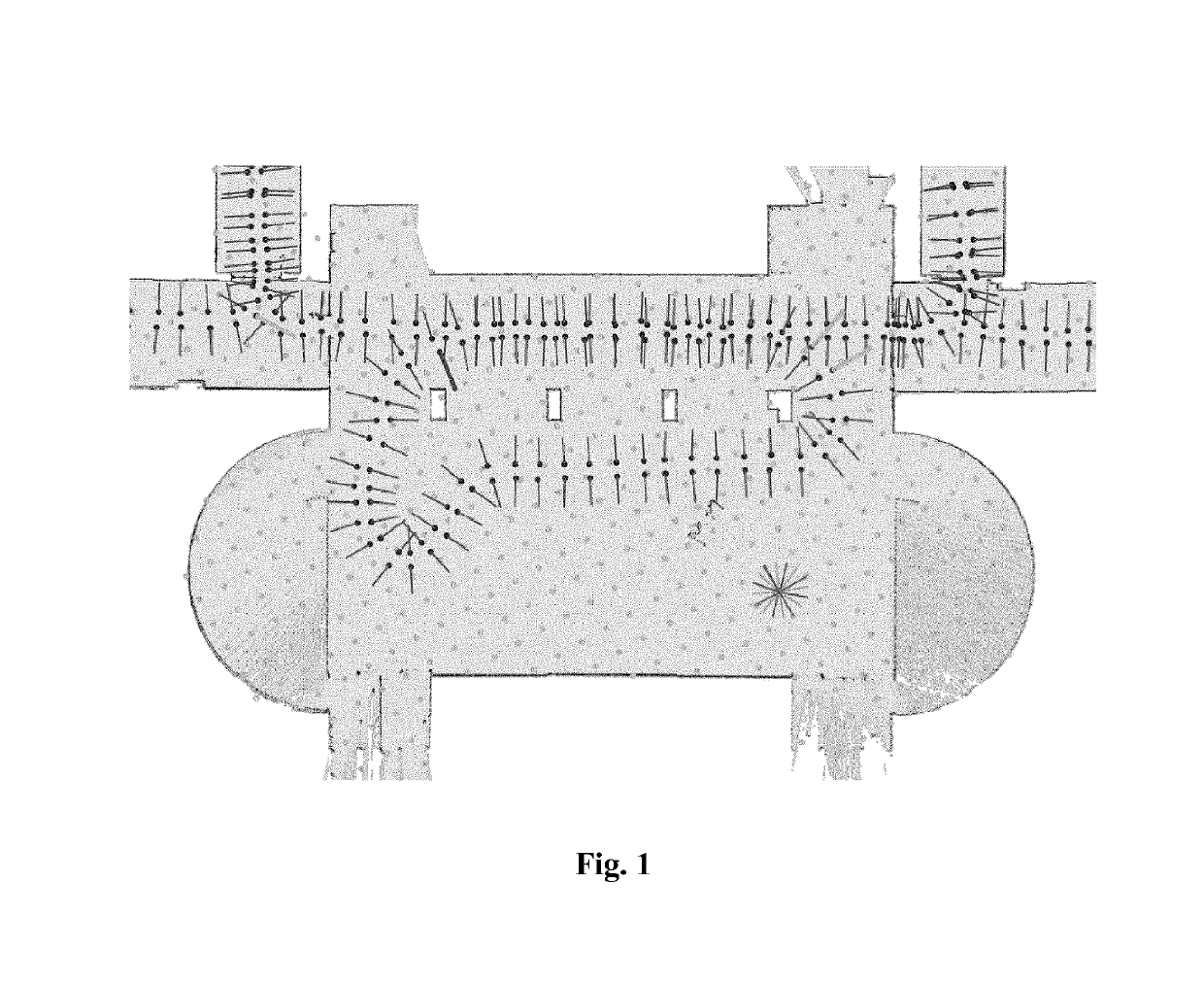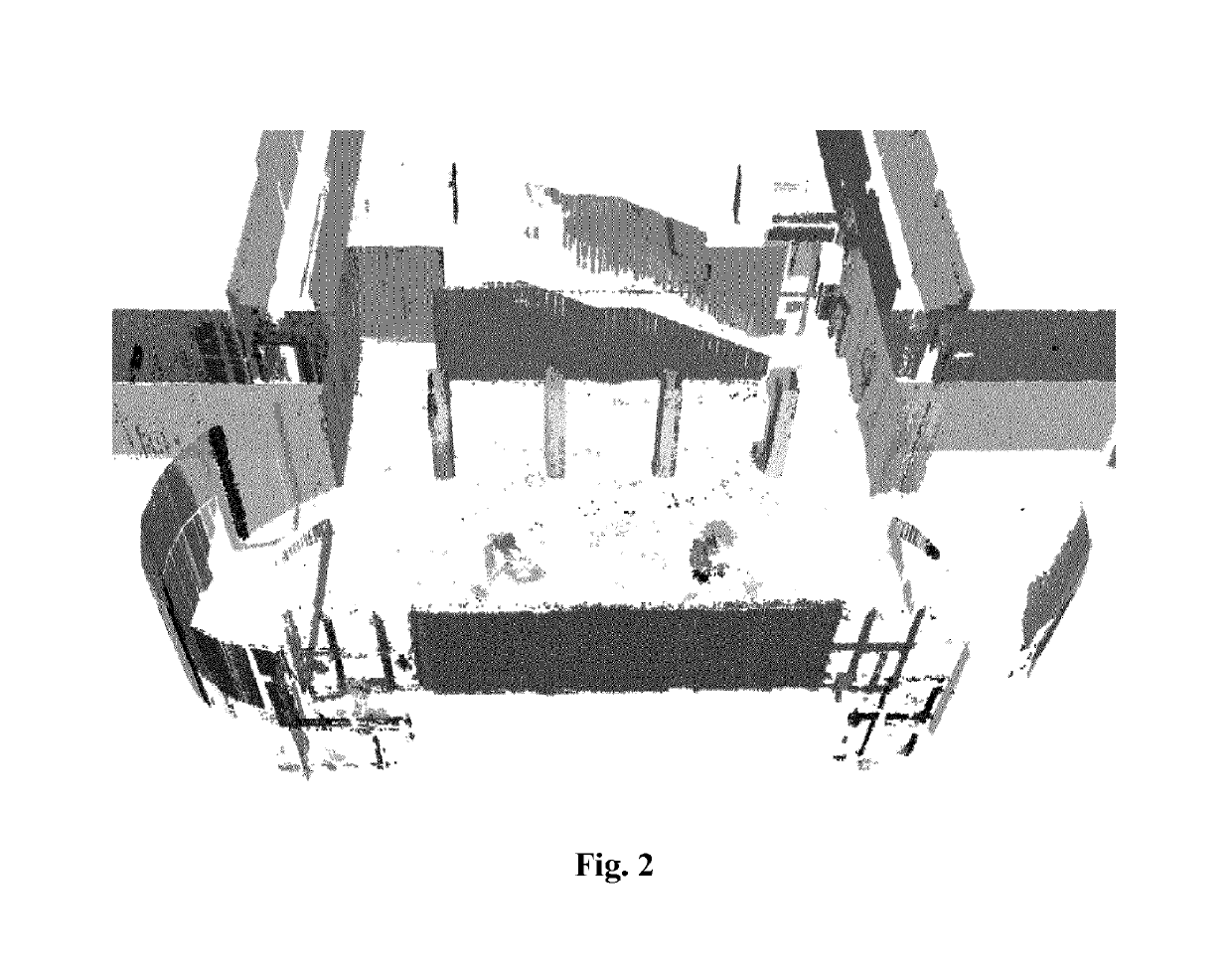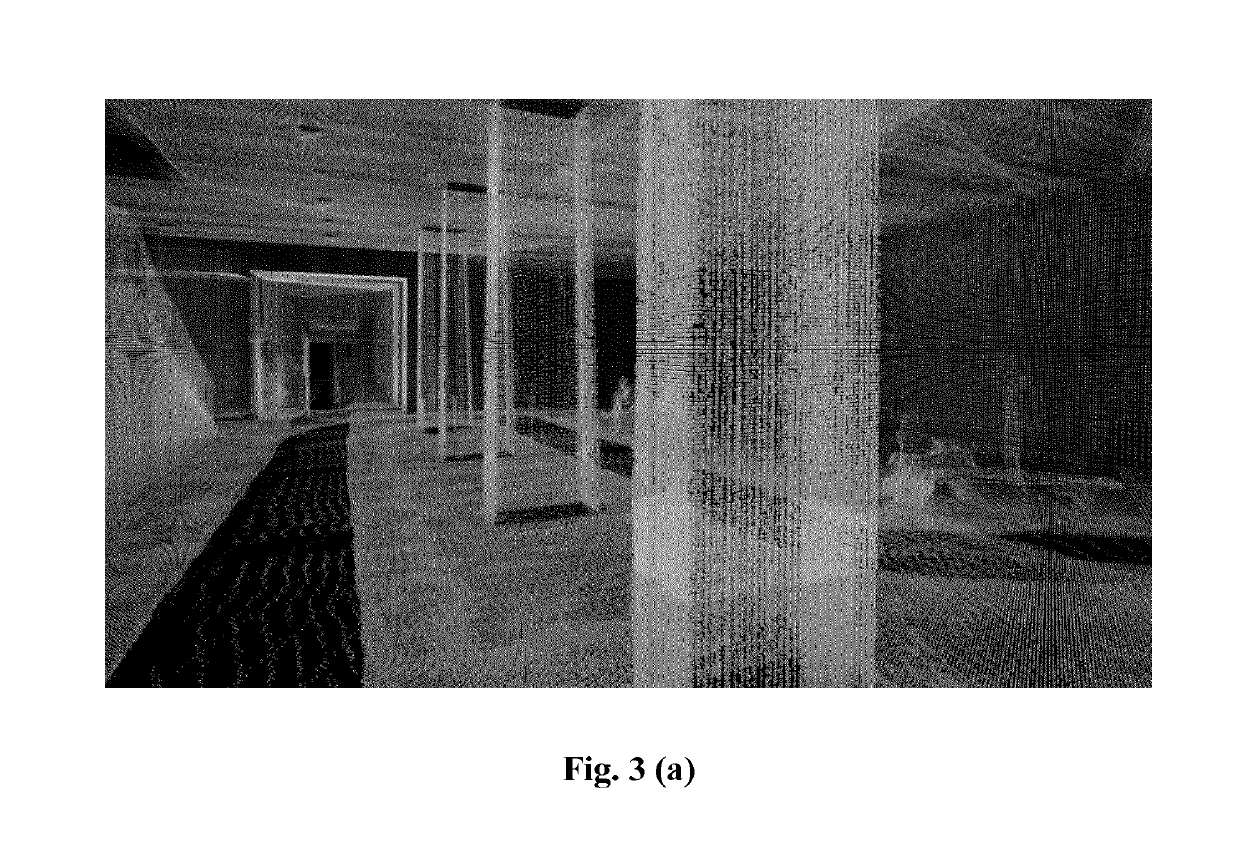Visual localisation
a visual localization and localization technology, applied in the field of visual localisation, can solve the problems of not being able to reliably and accurately determine the location of users inside buildings, no infrastructure supporting localization inside buildings, and smartphones may not be equipped with specialized localization hardware. to achieve the effect of reliable visual localization
- Summary
- Abstract
- Description
- Claims
- Application Information
AI Technical Summary
Benefits of technology
Problems solved by technology
Method used
Image
Examples
Embodiment Construction
[0074]As described above, the present invention enables the rendering of (partial) images from arbitrary viewpoints in a 3D scene or environment. In an embodiment of the present invention, in order to simplify the mapping phase and the rendering of novel views, triangulation of points to meshes is avoided, and instead predetermined geometric models, such as planes, are used to represent portions / regions of the environment, e.g. building interiors. As projections of a plane into the image space of two cameras are related by a homography (projective transform), viewpoint changes from one camera towards the other can be simulated by applying the projective transform to the former camera's image. In this embodiment, a reference view is chosen as the former camera and its image is transformed to the virtual camera's view by applying the projective transform, which is a function of pose and calibration of the two cameras (reference view and virtual view) and the plane's ...
PUM
 Login to View More
Login to View More Abstract
Description
Claims
Application Information
 Login to View More
Login to View More - R&D
- Intellectual Property
- Life Sciences
- Materials
- Tech Scout
- Unparalleled Data Quality
- Higher Quality Content
- 60% Fewer Hallucinations
Browse by: Latest US Patents, China's latest patents, Technical Efficacy Thesaurus, Application Domain, Technology Topic, Popular Technical Reports.
© 2025 PatSnap. All rights reserved.Legal|Privacy policy|Modern Slavery Act Transparency Statement|Sitemap|About US| Contact US: help@patsnap.com



